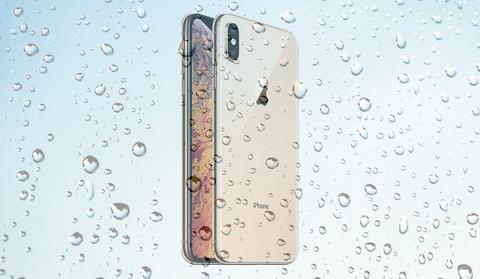Since the launch of the first waterproof smartphone, the Sony Xperia Z in 2013, most mobile phone manufacturers have adopted water-resistant or waterproof technology in their devices. But just how resistant to water are they?
It’s worth pointing out that waterproof and water-resistant are not the same thing. While waterproof means a device is completely impervious to water regardless of how long it’s submerged for, water-resistant means the device can withstand a certain degree of water, but not completely. In terms of electronic devices like smartphones and watches, manufacturers almost always talk in terms of how water-resistant they are, rather than waterproof.
Mobile phones are rated with an International Protection Marking (or IP Code), made up of two digitals. The first – a 4, 5 or 6 – concerns how resistant the device is to dust. A 4 rating means the device is protected against particles greater than 1mm in width, 5 means the device is protected against dust interfering with its operation, and 6 means there will be no ingress of dust at all for at least eight hours. The second digit pertains to how protected against water the device is. A 4 means that the device is protected from splashes of water, 5 means the device is protected from water jets from a 6.3mm nozzle, and 6 offers protection from water jets with a nozzle of up to 12.5mm. 7 means the device is protected from being immersed in up to 1 metre of fresh water for 30 minutes, and 8 offers protection from immersion in more than 1 metre of fresh water for up to 30 minutes. As well as these IP ratings, different devices may specify additional information with regards to how water-resistant they are. The language, drawn up by the International Electrotechnical Commission, is carefully worded. You’ll notice that the IP ratings specify fresh water, meaning that salt water and other liquids like coffee, beer and sugary drinks are not covered. In saying that, however, if you have a water-resistant smartphone and you spill coffee on it, it’s unlikely to cause any lasting damage as long as you wipe it off quickly. While promoting their IP68-certified Xperia smartphone in 2015, Sony released a controversial ad showing a group of people taking photos underwater, which they had to then stop encouraging. The technology giant stressed that the phone’s IP rating was achieved in laboratory conditions, and in standby mode.
So how do the latest smartphone models fare when it comes to water-resistance? The Samsung Galaxy S10, S10 Plus and S10e have an IP68 rating, meaning they are resistant to dust for up to eight hours and are protected in up to five feet of water for up to 30 minutes. This has been achieved even with the 3.5mm headphone jack that other high-end smartphones like the iPhone have had to forfeit to achieve water-resistance. The iPhone XS and XS Max offer an improvement on 2017’s iPhone X and X Max, moving up to IP68 from IP67, which had been the standard since the iPhone 7 and 7 Plus in 2016. Like the Samsung Galaxy smartphones, the iPhone XS and XS Max offer protection against up to five feet of water for up to half an hour.
